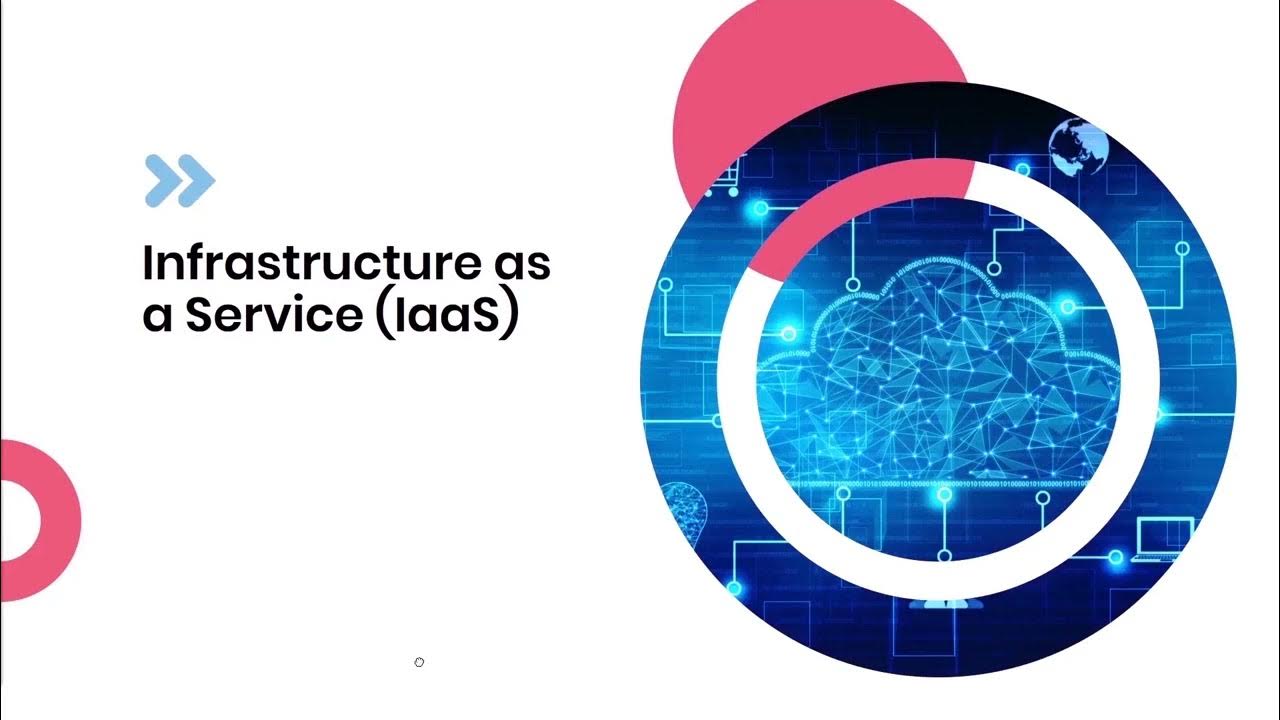Materi
Summary
TLDRThis lecture covers cloud computing, discussing its definition, key components, and benefits. Cloud computing is described as a set of services, such as applications, storage, and computation, available via the internet. It enables users and organizations to access computing resources on demand, reducing costs and improving efficiency. The lecture also highlights different service models like IaaS, PaaS, and SaaS, and various cloud architectures (public, private, hybrid). Examples like Google Drive and AWS illustrate its real-world applications, showcasing the convenience, scalability, and flexibility offered by cloud computing for both individuals and businesses.
Takeaways
- 😀 Cloud computing refers to accessing computational resources like servers, networks, storage, and applications over the internet, much like utility services such as electricity or water.
- 😀 Cloud computing enables users to access resources on-demand without the need to buy and maintain their own infrastructure, which saves costs, especially for smaller organizations.
- 😀 Cloud computing is implemented on a cluster of interconnected computers that work together to provide high-performance computing capabilities.
- 😀 Using cloud services allows businesses to avoid the high costs associated with hardware and software maintenance, including physical data centers and electricity.
- 😀 Cloud computing can be categorized into three service models: Infrastructure as a Service (IaaS), Platform as a Service (PaaS), and Software as a Service (SaaS).
- 😀 Major cloud providers like AWS, Microsoft Azure, and Google Cloud offer scalable services that help companies reduce overhead and enhance operational efficiency.
- 😀 Cloud storage services like Google Drive and Dropbox offer users the ability to store and access files over the internet, eliminating the need for local storage devices.
- 😀 Cloud computing platforms are flexible, with pricing based on usage, making them cost-effective for businesses of all sizes, from startups to large enterprises.
- 😀 AWS (Amazon Web Services) is currently the largest cloud service provider, offering on-demand services to major clients like Netflix and FD, while ensuring high performance and reliability.
- 😀 Cloud providers manage the complexities of data backup and disaster recovery, ensuring high availability and security for cloud-stored data.
Q & A
What is cloud computing?
-Cloud computing refers to the use of internet-based services for computing tasks, such as storage, applications, and computational services. It allows users to access computing resources like servers, storage, and applications on demand without the need to manage infrastructure.
How does cloud computing help organizations save costs?
-Cloud computing helps organizations save costs by eliminating the need for purchasing and maintaining their own infrastructure. Organizations can access computing resources on demand, paying only for what they use, which reduces the need for large upfront investments in hardware and maintenance.
What are some common examples of cloud computing services used in daily life?
-Examples of cloud computing services that people commonly use include Google Drive, Dropbox for file storage, and online gaming platforms. These services store data remotely and allow users to access their files and applications from anywhere with an internet connection.
What are the different types of cloud computing models?
-The three main types of cloud computing models are: 1) Software as a Service (SaaS), which provides access to software applications over the internet, 2) Platform as a Service (PaaS), which provides a platform for users to develop and run applications, and 3) Infrastructure as a Service (IaaS), which provides virtualized computing resources like servers and storage.
What is the main advantage of using cloud computing for small and medium-sized businesses?
-The main advantage for small and medium-sized businesses is the ability to access scalable computing resources without the need for expensive hardware or IT staff. They can use cloud services for storage, applications, and computing power without the high upfront costs and ongoing maintenance.
How does cloud computing improve operational efficiency?
-Cloud computing improves operational efficiency by providing on-demand access to computing resources, which means organizations can scale up or down quickly based on needs. It also reduces the complexity of managing infrastructure, allowing companies to focus more on their core operations.
What is a common misconception about cloud computing?
-A common misconception about cloud computing is that it only involves storing files. In reality, cloud computing also encompasses infrastructure, platforms, and applications, providing a wide range of services beyond just data storage.
What are some potential risks or challenges associated with cloud computing?
-Some risks associated with cloud computing include data security concerns, potential service outages, and dependency on third-party providers. If a cloud service provider experiences downtime or issues, it can disrupt an organization’s operations.
What is the concept of 'on-demand' in cloud computing?
-In cloud computing, 'on-demand' refers to the ability to request and receive computing services or resources instantly, as needed. This allows users or organizations to access services only when required, making it a cost-efficient and flexible model.
Why is AWS considered the leading cloud service provider?
-AWS (Amazon Web Services) is considered the leading cloud service provider due to its extensive range of services, scalability, and flexibility. It allows businesses to access computing resources such as storage, computing power, and databases on demand, and is trusted by major companies like Netflix.
Outlines

This section is available to paid users only. Please upgrade to access this part.
Upgrade NowMindmap

This section is available to paid users only. Please upgrade to access this part.
Upgrade NowKeywords

This section is available to paid users only. Please upgrade to access this part.
Upgrade NowHighlights

This section is available to paid users only. Please upgrade to access this part.
Upgrade NowTranscripts

This section is available to paid users only. Please upgrade to access this part.
Upgrade NowBrowse More Related Video

Most Asked Cloud Computing Interview Questions | TCS | WIPRO | HCL | Many More

Cloud Engineer: Apache CloudStack - Install, Build and Run IaaS Cloud

CLOUD COMPUTING | CLOUD TECHNOLOGY

TEKNOLOGI CD DAN DVD (XII MIPA 1) TUGAS FISIKA

M1.L6. Cloud Computing

Amazon AWS, Azure e Google Cloud: Come funziona davvero il CLOUD?
5.0 / 5 (0 votes)